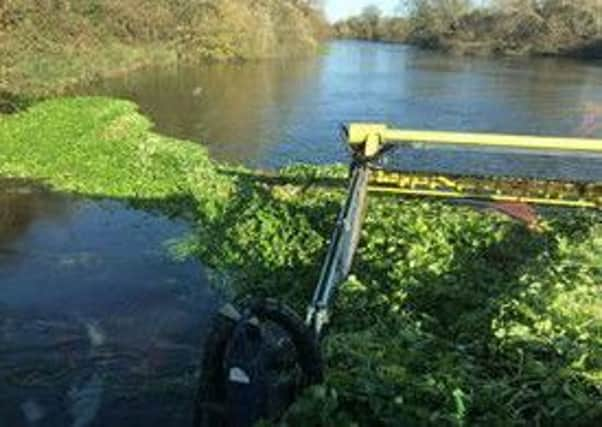Pennywort clean-up underway on River Witham


Teams of workers from the EA tackled 50 new patches that had appeared on the Witham between Lincoln and Chapel Hill neat Tattershall.
That work was in addition to more than 500 tonnes of pennywort removed from the Bedford Ouse, 400 tonnes from the River Cam, and 200 tonnes from the Ely Ouse.
Advertisement
Hide AdAdvertisement
Hide AdIt’s part of a sustained attack on the non-native species this winter that sees the EA working with partners, contractors, local communities and volunteer groups to clear the plant – even by hand, when necessary.
Floating pennywort forms dense matts that can affect oxygen levels in the water, crowd and kill off native wildlife, and damage habitat.
It can become so prolific that boaters, anglers and others can’t use the waterway, and it even clogs sluices, weirs and drains, potentially increasing flood risk.
The plant is notoriously difficult to control – it can grow up to 25cm per day in the right conditions and even a small fragment can regrow into a new plant.
Advertisement
Hide AdAdvertisement
Hide AdVolunteers from local fishing, canoeing and boating groups are also chipping in by removing rafts of the weed with their hands, nets and bin bags.
Removal efforts will continue into the spring and the EA is appealing to the public to report any patches they see – and to take precautions to avoid spreading it.
Paul Separovic, team leader at the EA, said:“Floating pennywort can cause damage and prevent people from enjoying pastimes that bring them closer to nature.”